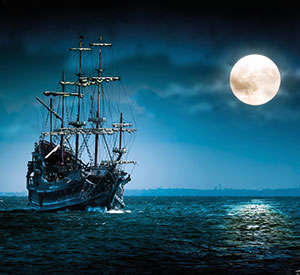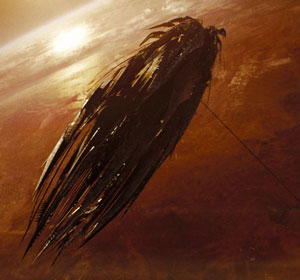By Nick Pullia
The story is told quite viscerally through music: a ship dripping dread appears suddenly in the darkness, ahead of a storm that portends death. Such was the setting of the final weekend of the Chicago Symphony Orchestra’s 2015 summer residency at Ravinia. Ah, yes, The Flying Dutchman. Or, wait, was it Star Trek?

The CSO played the Wagnerian opera—conducted by James Conlon in his grand finale as music director of the CSO residency—on Saturday, followed by the acclaimed Michael Giacchino score to the film Star Trek on Sunday. There were giant video screens in the Pavilion and on the lawn for both concerts so not a second of the action would be missed.
Was it a coincidence that ghastly ships loomed large in these stories separated by centuries? Well, perhaps it was a coincidence that both occurred in the same weekend, but otherwise, no; the odds are that archetypal themes can crop up at anytime. They are the timeless version of Kevin Bacon, linking together the stories mankind has told itself since time immemorial. What we had this weekend was two examples of what the best artists of their periods accomplished when they got their hands on these twice-told tales.
 Courtesy of Paramount Pictures and/or CBS Studios
Courtesy of Paramount Pictures and/or CBS Studios
This brief passage does not pretend to be a dissertation comparing and contrasting the fiction, fear, and fable behind that Dutch ship of lore that emerged from black clouds and the Romulan ship of 2009 that emerged from black holes. My point is that as mankind’s archetypal stories—from star-crossed lovers, to angry gods, to ships that pass in the night—take on new shapes (and new audiences), there’s no reason our music shouldn’t boldly go with them. Pundits say that if Beethoven were alive today he’d be writing film scores (of course, as brilliant as he was, he may have gone into wealth management).
The beautiful part is that the newest tellings don’t erase the previous versions. Shakespeare’s Romeo and Juliet not only inspired Tchaikovsky’s ballet and Bernstein’s West Side Story, but they all coexist beautifully, none superseded. To borrow a phrase, “there’s a place for us” in one of these stories, and if we like one version, that might encourage us to give another a try.

